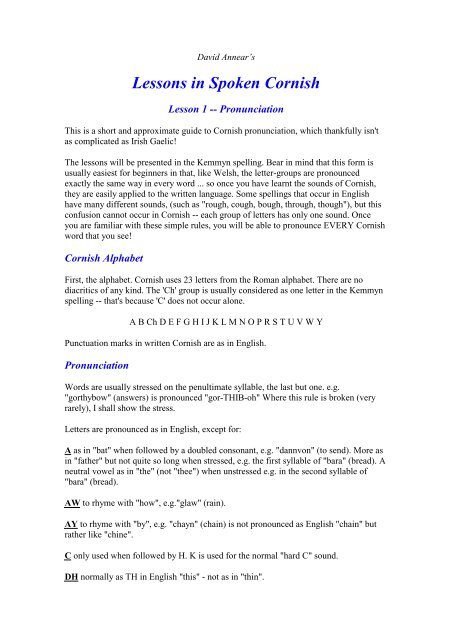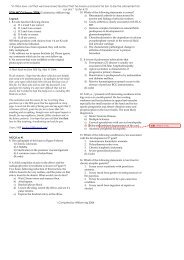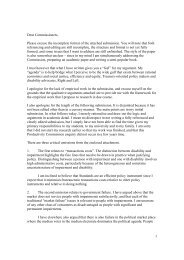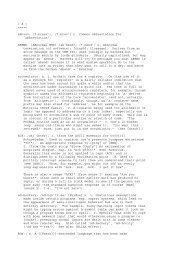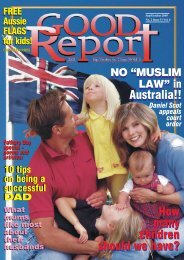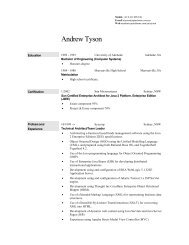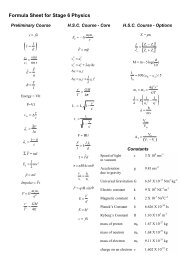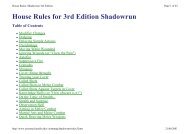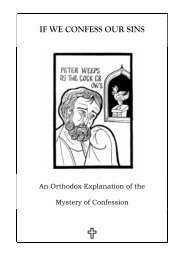Cornish Language & Names in Family Research
Cornish Language & Names in Family Research
Cornish Language & Names in Family Research
- No tags were found...
Create successful ePaper yourself
Turn your PDF publications into a flip-book with our unique Google optimized e-Paper software.
David Annear’sLessons <strong>in</strong> Spoken <strong>Cornish</strong>Lesson 1 -- PronunciationThis is a short and approximate guide to <strong>Cornish</strong> pronunciation, which thankfully isn'tas complicated as Irish Gaelic!The lessons will be presented <strong>in</strong> the Kemmyn spell<strong>in</strong>g. Bear <strong>in</strong> m<strong>in</strong>d that this form isusually easiest for beg<strong>in</strong>ners <strong>in</strong> that, like Welsh, the letter-groups are pronouncedexactly the same way <strong>in</strong> every word ... so once you have learnt the sounds of <strong>Cornish</strong>,they are easily applied to the written language. Some spell<strong>in</strong>gs that occur <strong>in</strong> Englishhave many different sounds, (such as "rough, cough, bough, through, though"), but thisconfusion cannot occur <strong>in</strong> <strong>Cornish</strong> -- each group of letters has only one sound. Onceyou are familiar with these simple rules, you will be able to pronounce EVERY <strong>Cornish</strong>word that you see!<strong>Cornish</strong> AlphabetFirst, the alphabet. <strong>Cornish</strong> uses 23 letters from the Roman alphabet. There are nodiacritics of any k<strong>in</strong>d. The 'Ch' group is usually considered as one letter <strong>in</strong> the Kemmynspell<strong>in</strong>g -- that's because 'C' does not occur alone.A B Ch D E F G H I J K L M N O P R S T U V W YPunctuation marks <strong>in</strong> written <strong>Cornish</strong> are as <strong>in</strong> English.PronunciationWords are usually stressed on the penultimate syllable, the last but one. e.g."gorthybow" (answers) is pronounced "gor-THIB-oh" Where this rule is broken (veryrarely), I shall show the stress.Letters are pronounced as <strong>in</strong> English, except for:A as <strong>in</strong> "bat" when followed by a doubled consonant, e.g. "dannvon" (to send). More as<strong>in</strong> "father" but not quite so long when stressed, e.g. the first syllable of "bara" (bread). Aneutral vowel as <strong>in</strong> "the" (not "thee") when unstressed e.g. <strong>in</strong> the second syllable of"bara" (bread).AW to rhyme with "how", e.g."glaw" (ra<strong>in</strong>).AY to rhyme with "by", e.g. "chayn" (cha<strong>in</strong>) is not pronounced as English "cha<strong>in</strong>" butrather like "ch<strong>in</strong>e".C only used when followed by H. K is used for the normal "hard C" sound.DH normally as TH <strong>in</strong> English "this" - not as <strong>in</strong> "th<strong>in</strong>".


